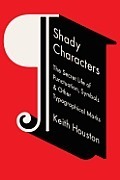Recent-ish Roundup
As ever, there are more books than time. Here are four titles that deserve your time and attention more than the brief-ish mention they’re being given here.
This is one of those straightforward propulsively readable things you finish and wonder why you don’t read more of: Buried Treasure is the story of a family blasted apart by a variety of incidents (a boy’s kidnapping; a father’s alcoholism; a mother’s death), and the attemps those who remain, suriviving, make to keep living, keep being something more than merely fatigued walking scars. Like lots of first books, Downs’s debut lags in a couple ways: in the first bit, the pace is too slow (the reader can almost feel the pieces being fit together, the machinery coming to life), though soon enough the story gets its bearings and moves along. Then there’s the issue of dovetailing—I don’t know what term you use for this, but it’s the thing in books (or movies) in which the story’s needs trump those of the characters. This happens here mostly in dialogue (which tends toward overexplanation and a thoroughness that’s lacking in actual day-to-day speaking). Neither of these are huge problems: ultimately, the book’s eminently readable.
 The Disaster Artist
by Greg Sestero and Tom Bissell
The Disaster Artist
by Greg Sestero and Tom Bissell
I had not, before reading The Disaster Artist, seen The Room, a movie I was made aware of (like who even knows how many people) by Bissell’s essay in Harper’s in 2010. Further, I’m seemingly termpermentally unable to like things ironically—I understand kitsch as a concept, but I don’t…there’s something charmless and cold about liking stuff that one doesn’t simply feel, like a kick to the chest. I’m sure that sounds all sorts of earnest (I’m midwestern, after all). Whatever. The point is: even now, having seen The Room, I’m not taken with it—its cult-creating ability would’ve missed me. It seems a strangely sad movie about things not being comprehendable, but I suppose that’s got more to do with my own feelings than anything.
All of which to say: even for not much caring for or about the movie the book’s centered around, I was fairly well taken by The Disaster Artist. Sestero plays Mark in The Room, the guy who sleeps with Johnny’s fiancee, all of which, whatever: the book is about Tommy Wiseau, an actor Sistero met in an acting class, and who, somehow, puts together The Room—starring and producing and directing and micromanaging it to death—for $6M. What the book ultimately reads as, however, is a sad and un-understandable story of one guy who’s big dream—making this movie, telling this story—comes true, yet the resulting movie’s so absurd it all but occludes whatever was originally compelling about the dream. The Disaster Artist is a great book about one of the weirdest movies ever made. Go try it out. See what happens.
 Shady Characters by Keith Houston
Shady Characters by Keith Houston
This book’s actually just all sorts of fantastic: subtitled “The Secret Life of Punctuation, Symbols, and Other Typographical Marks,” it reads like a bit of kin to Just My Type, a book also fantastic and all about fonts. What Houston does here is focus on specific symbols, and, no, you’re right: one would not necessarily guess or believe that the history and development of, say, the octothorpe (#) would be riveting, but it really, really is. Ditto the history and development of the @ symbol, and the ampersand, the interrobang, etc. It’s riveting stuff.
And not just the history and development of this stuff: one of the things Houston does very well is trace the significance of *why* these things came to be (asterisk’s in there as well, yes), and what we’re given, because of this, is not just an appreciation for the specific symbols, but an appreciation for the code of written communication, for all the magic and utility it offers.
I’ve got the first few seasons of The Muppet Show, and I still find myself absently humming the theme to Fraggle Rock and Muppet Babies, and I think Kermit the Frog and Grover and the rest of the Sesame Street muppets are as culturally significant as any other characters created in the last half century, all of which means that I was a goner for this biography of Henson before I even cracked it. Fortunately, the book’s one of those great bios—likely, given Henson’s stature, there’ll be more, but there needn’t be: Brian Jay Jones has covered the man’s work thoroughly, dancing that fine line between respectful coverage and dirty-underwear-sniffing overexposure (especially, for instance, regarding Henson’s first marriage, a relationship grounded in creative energy and a shared pursuit [Muppets], the sort one regularly reads about when it comes to talented artists chasing their visions). There’s almost too much good stuff in here to tweeze particulars out in praise of their unique fascination—where to start? With the fact that puppetry was, in the 1950′s, offered through home ec departments in colleges? Or that Henson got his start (like so many others) in advertising? Or that Kermit was originally blue? Or to read about how much and fervently Henson believed in and cared about Labyrinth? It’s all in there, and it’s all great, but the real joy’s in something like the amazement offered as you read along and realize this all happened to/because of/through this one guy, this genius who, awfully, died shockingly young from an infection. Easy, at the book’s end, to play the game, to wish Henson’d've gone to the doctor sooner; hard to reckon with the size of his talent and vision and the fact that it’s not coming back.




 Jim Henson by Brian Jay Jones
Jim Henson by Brian Jay Jones

